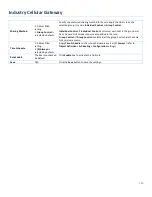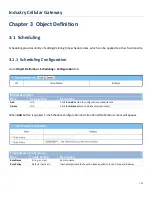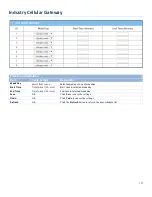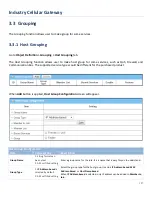
Industry Cellular Gateway
2.8 QoS
The total amount of data traffic increases nowadays as the higher demand of mobile applications, like Game /
Chat / VoIP / P2P / Video / Web access. In order to pose new requirements for data transport, e.g. low latency,
low data loss, the entire network must ensure them via a connection service guarantee.
The main goal of QoS (Quality of Service) is prioritizing incoming data, and preventing data loss due to factors
such as jitter, delay and dropping. Another important aspect of QoS is ensuring that prioritizing one data flow
doesn’t interfere with other data flows. So, QoS helps to prioritize data as it enters your router. By attaching
special identification marks or headers to incoming packets, QoS determines which queue the packets enter,
based on priority. This is useful when there are certain types of data you want to give higher priority to, such as
voice packets given higher priority than Web data packets.
To utilize your network throughput completely, administrator must define bandwidth control rules carefully to
balance the utilization of network bandwidth for all users to access. It is indeed required that an access
gateway satisfies the requirements of latency-critical applications, minimum access right guarantee, fair
bandwidth usage for same subscribed condition and flexible bandwidth management. AMIT Security Gateway
provides a Rule-based QoS to carry out the requirements.
2.8.1 QoS Configuration
This gateway provides lots of flexible rules for you to set QoS policies. Basically, you need to know three parts
of information before you create your own policies. First, “who” needs to be managed? Second, “what” kind of
service needs to be managed? The last part is “how” you prioritize. Once you have this information, you can
continue to learn functions in this section in more detail.
QoS Rule Configuration
When you want to add a new QoS rule or edit one already existed, the "QoS Rule Configuration" window
shows up for you to configure. The parameters in a rule include the applied WAN interfaces, the dedicated
host group based on MAC address or IP address, the dedicated kind of service packets, the system resource to
be distributed, the corresponding control function for your specified resource, the packet flow direction, the
sharing method for the control function, the integrated time schedule rule and the rule activation. Following
diagram illustrates how to organize a QoS rule.
142
















































